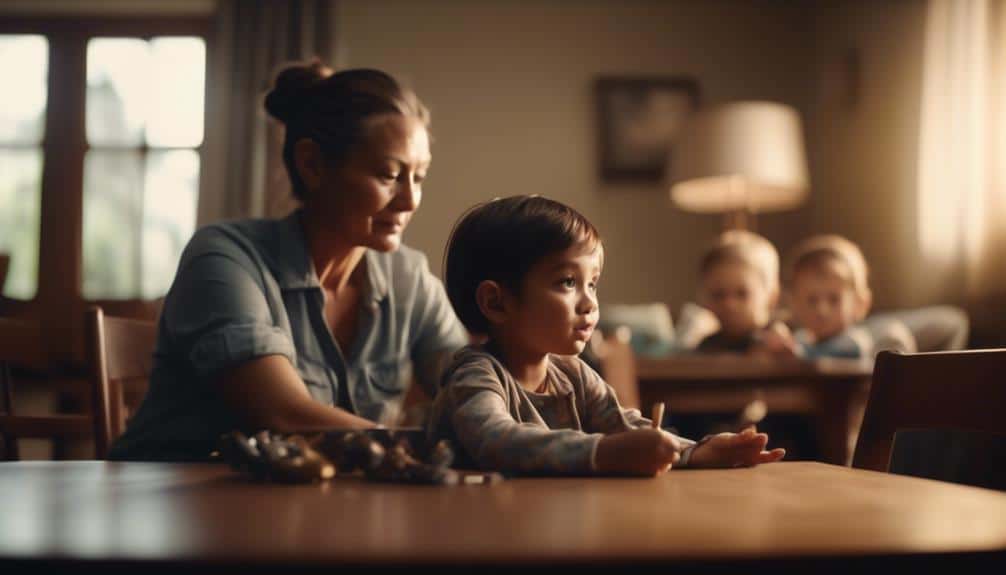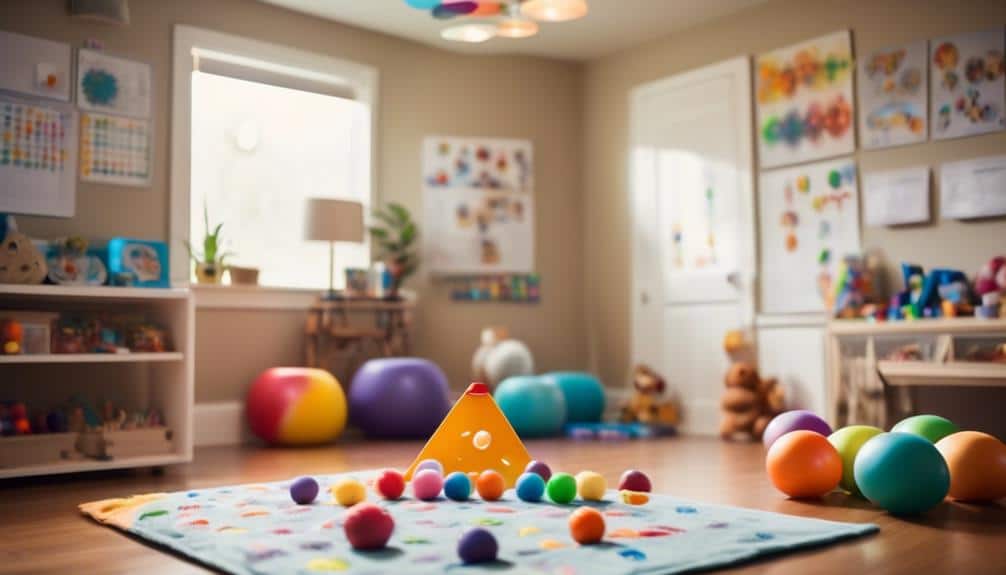Addressing the challenges presented by Attention Deficit Hyperactivity Disorder (ADHD) in children requires a multifaceted approach, combining knowledge, patience, and the implementation of effective strategies. Among the numerous ADHD behavior strategies available, seven key pediatric therapy behavior strategies have emerged as notably beneficial. These strategies, ranging from parent training programs emphasizing praise and consistency to establishing structured routines that foster a sense of predictability, aim to equip children with the skills necessary to navigate their symptoms. Additionally, the nuanced application of rewards and consequences and the targeted development of executive function skills play a pivotal role in managing ADHD.
However, the effectiveness of these strategies can vary significantly among individuals, particularly as they transition into adolescence, highlighting the importance of a tailored approach.
As we explore these strategies further, it becomes evident that their successful implementation can not only mitigate the impact of ADHD on daily functioning but also empower children to achieve their full potential. Join us in uncovering the intricacies of these strategies and their role in shaping the lives of children with ADHD.
Key Takeaways
- Positive reinforcement techniques, such as token boards and rewards, can create a structured environment and increase engagement and commitment.
- Implementing a structured routine with clear communication and expectations can reduce anxiety and increase compliance.
- Sensory integration activities, such as swinging or using sensory tools, can help regulate sensory experiences and enhance behavioral regulation and attention.
- Social skills training can equip children with essential tools for better interaction and understanding in social contexts, improving communication, empathy, and problem-solving abilities.
Positive Reinforcement Techniques
Positive reinforcement techniques are a cornerstone in enhancing desired behaviors in children with ADHD, leveraging specific rewards and praise to motivate and acknowledge their progress. This approach is not only about mitigating ADHD symptoms but also about empowering children to recognize their potential for positive behavior.
Parents and educators can create a structured environment that celebrates and rewards progress by utilizing behavior therapy and behavioral interventions, such as token boards or point systems. These systems teach kids the value of their actions, encouraging a cycle of positive reinforcement that is both motivating and self-sustaining.
Moreover, involving children in creating behavioral rules and rewards ensures that the interventions are tailored to their preferences, increasing their engagement and commitment to positive change. Clear and specific instructions about the desired behavior are essential, as they help children understand precisely what is expected of them. This clarity is crucial for children with ADHD, who benefit from structured guidance.
Positive reinforcement not only helps parents and educators to address ADHD symptoms effectively but also fosters an atmosphere of understanding, support, and encouragement, paving the way for children to thrive.
Structured Routine Development
Establishing a structured routine provides a solid foundation for children with ADHD to navigate their daily challenges more confidently and predictably. For parents and caregivers, implementing structured routine development is a cornerstone of ADHD treatment that plays a pivotal role in managing symptoms. This approach, deeply rooted in behavioral therapy, aims to help children with ADHD acquire essential skills for daily living, enhancing their ability to function more effectively.
Creating a daily routine, with clear communication about any changes or upcoming events, offers kids with ADHD the structure and predictability they desperately need. Setting clear rules and expectations before engaging in activities or situations helps the child understand what is expected of them, thereby reducing anxiety and increasing compliance.
Furthermore, breaking down complex tasks into manageable steps within a set time limit supports the child’s understanding and boosts their sense of achievement. Incorporating non-monetary rewards and a consistent reward system for good behavior and completed tasks reinforces positive behaviors. At the same time, a well-thought-out discipline plan ensures consistency in addressing unwanted behaviors.
Together, these strategies in structured routine development empower children with ADHD, fostering a sense of security and success in their daily lives.
Sensory Integration Activities

For many children with ADHD, engaging in sensory integration activities is a vital strategy to manage better and understand sensory input, enhancing focus and behavioral regulation. By incorporating activities that are specifically designed to address sensory processing issues, therapy can help children with ADHD develop coping mechanisms that significantly improve their day-to-day functioning. Sensory integration activities aid in treating children and empower them by learning new skills essential for completing a task and thriving in various environments.
To draw the audience in and keep them interested, consider these sensory integration activities:
- Swinging, bouncing, or jumping: These dynamic activities provide vital sensory input to help kids with ADHD improve their focus and attention.
- Using sensory tools: Items like fidget toys, weighted blankets, or tactile objects can offer comfort and help children regulate their sensory experiences.
- Creating a sensory-friendly environment: Tailoring spaces at home or in the classroom to minimize sensory overload can significantly support children in managing sensory challenges.
These strategies emphasize the importance of sensory integration activities in behavioral therapy, offering practical ways to help kids with ADHD enhance their behavioral regulation and attention.
Social Skills Training
Social Skills Training equips children with ADHD with essential tools for better interaction and understanding in social contexts. This specialized approach focuses on enhancing the ability of children and teens to navigate complex social environments effectively. Central to this training is the premise that behavioral therapy can teach critical life skills, helping to mitigate some of the interpersonal challenges caused by symptoms of ADHD.
Through social skills training, kids with attention-deficit/hyperactivity disorder learn to identify and manage their emotions, recognize social cues, and develop assertiveness in a supportive setting. Role-playing, modeling, and practical exercises are pivotal components, allowing participants to practice and refine these skills in real-time scenarios. This training in behavior is instrumental in fostering improved communication, empathy, and problem-solving abilities.
Moreover, children who participate in behavioral therapy focused on social skills are often better equipped to form healthier peer relationships, reduce conflicts, and enhance their overall social functioning. For parents and caregivers looking to help their child with ADHD, investing in social skills training can empower them to lead more fulfilling social lives.
Behavioral Modeling

Behavioral modeling is a critical strategy in ADHD pediatric therapy, offering a practical method for children to learn and adopt positive behaviors through observation and imitation. This approach facilitates the development of essential skills for managing ADHD by demonstrating and encouraging children to mirror positive behaviors observed in adults. Incorporating behavioral modeling into therapy and daily routines provides a robust foundation for behavior modification and management training, particularly beneficial for children struggling with attention, organization, and task prioritization.
To captivate and maintain your interest, consider these essential aspects of behavioral modeling:
- Demonstration of Skills: Adults can model effective strategies for managing distractions, prioritizing tasks, and staying organized, offering children with ADHD tangible examples to emulate.
- Positive Reinforcement: Employing positive reinforcement and praise when children exhibit desired behaviors amplifies the benefits of modeling, reinforcing the adoption of positive behavior.
- Integration into Daily Life: Behavioral modeling can seamlessly be integrated into school settings, home environments, and daily routines, ensuring consistent exposure and opportunities for children to practice and internalize these behaviors.
Emphasizing behavioral treatment through modeling equips both the child with ADHD and their parents with practical tools and strategies, fostering an environment conducive to learning and growth.
Task Simplification Strategies
In addressing the unique challenges faced by children with ADHD, task simplification strategies offer a practical and effective approach. Breaking down assignments into smaller, more manageable steps, coupled with visual step guides, significantly reduces overwhelm and enhances task completion rates.
These methods facilitate a better understanding of tasks, foster a sense of accomplishment, and improve overall focus.
Breaking Down Assignments
To effectively support children with ADHD in managing their assignments, it is crucial to break down complex tasks into smaller, manageable steps. This approach aligns with best practices in treatment and empowers kids to learn the essential skill of following instructions. By simplifying tasks, therapy helps children with ADHD approach their work confidently, aiding both parents and teachers in treating ADHD effectively.
- Use Visual Aids: Checklists and timelines assist in tracking progress and staying organized.
- Provide Clear Instructions: Ensure children understand what is expected with concise directions.
- Implement a Reward System: Motivate with rewards for each completed step, reinforcing positive behavior and progress.
These strategies are invaluable for those dedicated to serving children with ADHD and fostering an environment conducive to learning and growth.
Visual Step Guides
Visual step guides serve as a cornerstone in simplifying complex tasks for children with ADHD. They offer a clear and tangible pathway to task completion.
These task simplification strategies utilize visual aids like schedules, checklists, and pictorial instructions. They are pivotal in behavior management, empowering children by breaking down overwhelming tasks into manageable steps.
These strategies also foster independence while reducing impulsivity. Visual step guides bolster the child’s ability to stay organized and focused by providing structured, predictable environments.
Parents of children with ADHD and training programs can leverage these tools to increase positive outcomes significantly. Clear instructions and the ability to follow instructions are enhanced, making these guides invaluable in supporting the child’s journey toward mastering task management and improving time management skills.
Mindfulness and Relaxation Exercises

Mindfulness and relaxation exercises offer valuable tools for children with ADHD, aiding in stress management and enhancing focus. Techniques such as deep breathing, progressive muscle relaxation, and practices like meditation and yoga can significantly impact a child’s ability to manage the symptoms of Attention Deficit Hyperactivity Disorder (ADHD). These strategies reduce impulsivity and negative behavior and promote self-awareness and emotional regulation, which are crucial for their mental health.
To effectively serve children with ADHD, it’s essential to:
- Incorporate mindfulness and relaxation exercises into daily routines, creating a habit that fosters a sense of calm and reduces impulsivity.
- Teach parents and caregivers how to guide these practices, empowering them to set expectations and provide a supportive environment for practice.
- Emphasize that improvement takes time, encouraging a patient and persistent approach to practicing these techniques.
Mindfulness and relaxation exercises are not quick fixes but are part of a comprehensive approach to managing ADHD, often in conjunction with parent management training (PMT). By adopting these practices, we can offer children with ADHD tools to navigate their challenges more effectively, laying a foundation for improved focus and stress management.
Frequently Asked Questions
What Would Be Effective ADHD Behavior Strategies for Children?
Effective behavioral treatment for children with ADHD involves parent training programs and behavioral training to enhance executive functions and organizational tools. These approaches foster positive behaviors and manage symptoms effectively.
What Type of Behavior Therapy Is the Most Effective for ADHD?
Nearly 60% of children with ADHD respond positively to behavioral therapy, making it a highly effective approach. Tailored interventions, incorporating consistent consequences and positive reinforcement, significantly improve symptoms and daily functioning for these children.
Which Behavior Management Technique Would Be Used With a Child Who Has ADHD?
Behavior management techniques for a child with ADHD encompass utilizing non-monetary rewards, maintaining a consistent reward system, fostering open communication with educators, setting positive examples, and establishing structured daily routines to promote and reinforce positive behavior.
How Do You Manage ADHD Behavior in Children?
Managing behavior in ADHD children involves employing strategies such as consistent routines, positive reinforcement, behavioral training, and organizational tools. These methods help nurture executive function skills and encourage desirable behaviors.


Recent Comments